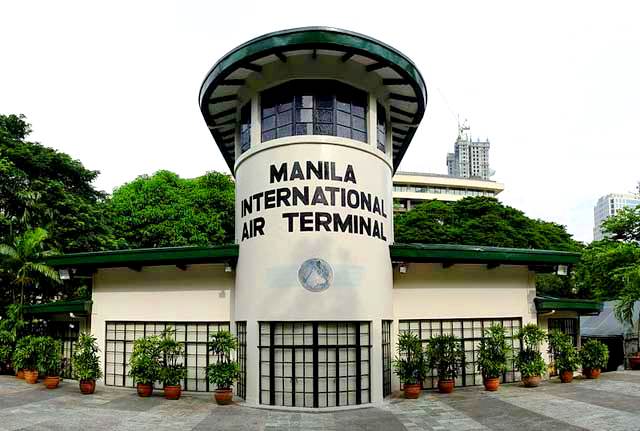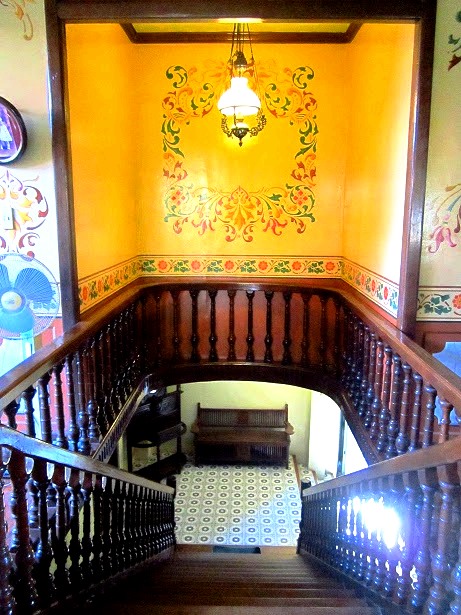Travel
Preserving Style, Preserving Heritage
There’s something about the sentimental charm of ancestral houses.
Personally, perhaps it’s about my own lack of anything ancestral—I grew up in the city, we barely visited my parents’ provinces. The city, its close-knit houses, and its cramped streets are all I know.
When I discovered my wanderlust, I knew I wanted to see old, historical stuff. Most tourists traveled for adventure, for an adrenalin rush. I traveled (or at least hoped to travel) for the sake of knowing more about local culture and history.
I think one would agree that someone’s home is one of the most accurate descriptions of one’s culture, beliefs, and even aspirations. That’s why we pour so much of our style and taste in decorating—or at least attempting to decorate—our lair.
Preservation of History and Sentiment
The restoration of the 1870 Villavicencio Wedding Gift House happened in 2002.
Excellently restored and now beautifully preserved, the house is now open for guests who would like to experience staying in an ancestral house full of antiques and colorful history.
In a third world country, one would think that we have bigger problems than the degradation of our nation’s historic landmarks and that’s true. However, thanks to concerned organizations, the preservation and restoration of ancestral houses, historical buildings, century-old churches, and even entire communities is not impossible.
In July 2013, Francesco Riccardo Monti’s name was thrown around for the sake of saving the 9.5-meter bas-relief at the old Meralco building in Manila’s Ermita district—his biggest sculpture in the country—after Manila City Hall granted permission of the demolition of the Meralco building.
With the help of the National Historical Commission of the Philippines, Heritage Conservation Society, One Meralco Foundation, and several concerned organizations and individuals, Monti’s “The Furies” was carefully removed prior and transferred safely to a new location to be restored and preserved accordingly.
When it comes to old houses and buildings, adaptive reuse (AR) is highly encouraged. According to Wikipedia, adaptive reuse is “the process of reusing an old site or building for a purpose other than which it was built or designed for… It can be regarded as a compromise between historic preservation and demolition.”
Instead of tearing down an old, historical building to make way for a new “development” (I’ve always found that real estate term a bit contradictory), conservation supporters suggest the preservation and restoration of that building to accommodate needed amenities while maintaining its historical structure. Around the world, excellent examples of AR are everywhere. Meanwhile, a bill has been passed to make a law about AR in the Philippines, but who knows when we’ll see the actuation of that bill.
Tourism professor and renowned travel blogger Ivan Henares is the head of the Heritage Conservation Society. For him, ”adaptive reuse is a creative mode of conservation that gives heritage structures new and alternative functions other than the original ones that may no longer be required.” On a 2013 post at the height of the Francesco Monti fiasco, he wrote, “Most often than not, built heritage resources are found on premium real estate property so developers are in a hurry to demolish rather than restore and recycle. Today, there is a growing awareness that adaptive reuse can enhance property value.”
Henares even listed a few examples of AR in the country.

Manila International Air Terminal a.k.a. Nielson Tower along Makati Avenue. Photo courtesy of Christopher Rath on Wikipedia.
“Examples of adaptive reuse in the country include the Old Legislative Building and Department of Finance, now the National Art Gallery and the Museum of the Filipino People, component museums of the National Museum. The Department of Tourism (former Department of Agriculture) will soon be transformed into the Museum of Natural Sciences with Architect Dominic Galicia leading the team that will retrofit this old building to house the new museum,” he wrote on his website.
Henares also mentioned the old Nielson Tower of then Manila International Air Terminal in Makati. Now, thanks to big guys from Ayala land, it houses the Filipinas Heritage Library. He also noted that “the Juan Luna E-Services Building (former First National City Bank) in Binondo, Manila is being retrofitted to host a future call center.”
A house, a wedding gift
In 1870, Don Eulalio Villavicencio married Gliceria Marella and gave her a house as a wedding gift. Despite being part of two of the wealthiest families in Taal, Batangas, this gift—until this day—is considered extravagant.
Together, the power couple owned and managed several businesses—land, rice fields, and sugar and tobacco plantations. They also owned a steamship called Bulusan, which they donated to the cause of the Katipunan during the 1896 revolution. They did not just provide the Katipunan’s first warship, but they also gave them financial support and even opened both of their homes to the Katipuneros and its officials when needed.
There were stories that when a certain General Jamarillo of the Spanish Brigade took over the wedding gift house in 1897, brave Gliceria would eavesdrop to the General and his men as they plot their moves against the indios. She would then report her findings to the Filipino revolutionaries in Calaca.
The remarkable couple’s involvement in the Katipunan eventually sent Don Eulalio to prison. When he passed away in 1898, his widow Gliceria carried on their patriotic duties. The same year, the Spanish forces surrendered and the wedding gift house was back to its rightful owners. The Philippine flag, Marcela Agoncillo’s masterful creation, was admired—for the first time ever—from the wedding gift house.
Don Eulalio, a ship captain, grew up in a bahay na bato (stone house) built in 1850 before he got married. Today, his childhood home is known as Casa Villavicencio. The wedding gift house, built just a few meters from his original home, is now more popularly known in Taal as the 1870 Villavicencio Wedding Gift House. Yeah, that’s pretty easy to remember.
The house survived World War II and even served as a hospital for American soldiers during the American occupation in the Philippines.
One night, I traveled back in time
Back in 2012, I had the privilege of staying at the Wedding Gift House.
I seriously did not want to leave this awesome place. I just wanted to stay here forever.
Staying in Villavicencio was like staying in a page from a children’s story book—colorful, whimsical, almost surreal. Everywhere you look, you’ll find vibrantly painted patterns, making the home look more inviting while keeping its antiquity untarnished. The colors actually made the house seem less creepy even in the dark of night.
The thing I love the most about how the Wedding Gift House was restored is the preservation of its antique, historical charm while making way for modern conveniences like an airconditioning unit or a gorgeous bathtub in the master’s bedroom.
The owner, Ms. Baby Joven-Quiblat, is such a gracious and hospitable woman. She even told us to treat her home like it was our home, reminding us that it’s not a hotel and she doesn’t have rigid rules that we should stick to. Their caretaker, Ate Raquel, is just as nice. She was very accommodating and inviting. She prepared our breakfast, which is probably one of the best breakfast spread I’ve had in a very long time. Because of her presence, the house didn’t feel creepy at all.
Our breakfast was a collection of Taal’s greatest hits: tapang Taal (cured beef), daing (daing is dried fish; we don’t know what kind of fish it was, all we know is that it was crispy and perfect with garlic vinegar), eggs over easy, freshly steamed rice, Taal suman (sticky rice cooked in banana leaves), and some awesome mainit na tsokolate (hot chocolate) from authentic tablea (cocoa balls) made in Batangas.
The hearty breakfast is one of the reasons why I will surely go back to Taal.
One night at the Villavicencio 1870 Wedding Gift House will set you back PhP 2,500 (around CAN $62).
We are absolutely grateful and full! Our hearts and tummies are overwhelmed. We can’t wait to go back in time again, even for just a night.
For more information, you can get in touch with Ms. Baby Joven-Quiblat at +639178970363. The 1870 Villavicencio Wedding Gift House is located along G. Marela Street, the yellow and blue house near Clinica Tenorio.





























